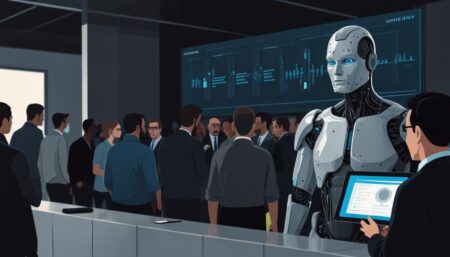A new exhibition at the Whitney Museum of American Art celebrates the pioneering work of Harold Cohen in the field of AI art, featuring his groundbreaking AI program, Aaron, and highlighting the fusion of art and technology.
Whitney Museum Celebrates Harold Cohen’s Pioneering AI Art
New York, March 2024 – The Whitney Museum of American Art is hosting an exhibition titled “Harold Cohen: Aaron” running through June 2024, spotlighting Harold Cohen, a British abstract painter who transitioned to using artificial intelligence in art in the late 1960s. In 1974, while teaching at the University of California, San Diego, Cohen introduced the world to Aaron, the first AI art program, during an exhibition at the University of California, Berkeley.
Aaron’s innovative art has been displayed in notable museums such as the Tate Gallery in London and the San Francisco Museum of Modern Art. The exhibition at the Whitney showcases two versions of Aaron: Aaron KCAT from 2001, which creates images of figures and plants, and Gijon from 2007, which produces jungle-like scenes. Visitors can observe the software generating art in real-time, marking a significant evolution from its original concept.
Christiane Paul, the museum’s curator of digital art, highlights the importance of this exhibit in the context of digital art history. The show presents a unique opportunity to engage with Cohen’s visionary fusion of art and technology, a field that has continued to evolve since his passing in 2016.
The exhibition underscores Cohen’s efforts to imbue Aaron with fundamental drawing techniques and knowledge about basic objects and physics, differentiating it from modern AI art programs that rely on image databases.
Whitney Museum of American Art continues to provide a platform to explore the intersection of art and technology, showcasing important advancements in digital art history.










